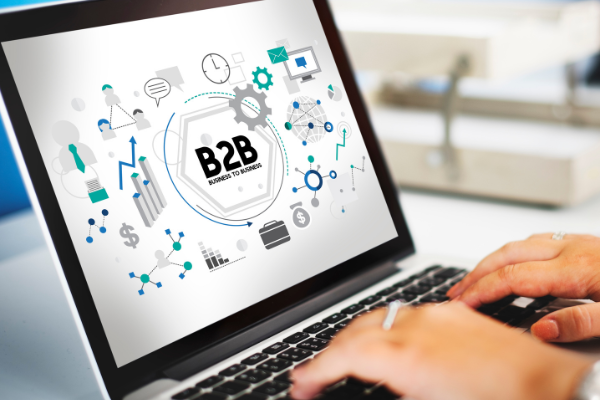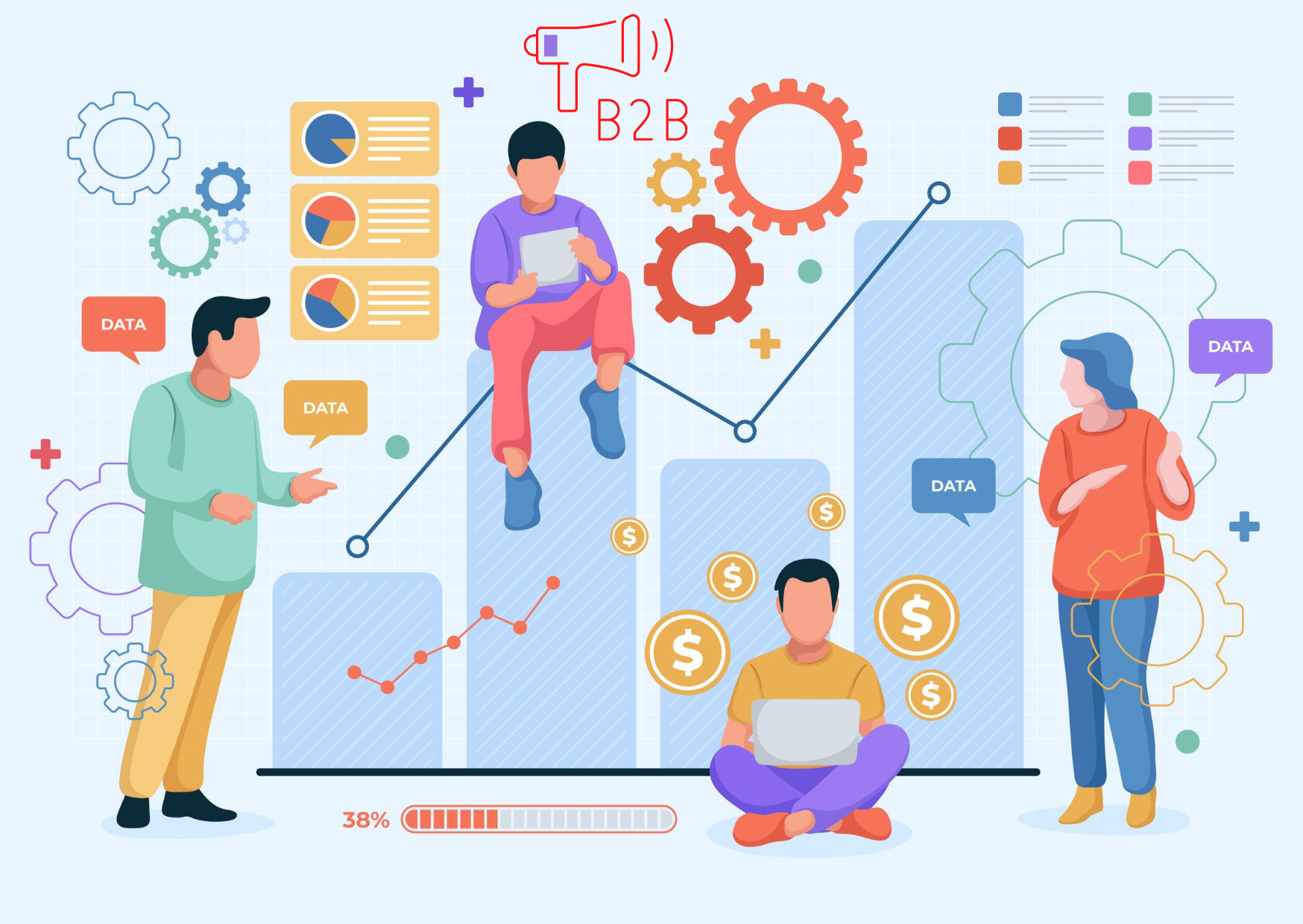Are you still struggling to get a steady stream of qualified leads for your sales pipeline? Then, you just need a reliable source of B2B data providers.
However, sourcing accurate data is usually hard for many companies due to various reasons.
But, we have got you covered!
As in this blog, you will explore the B2B data use cases, benefits of using it, and top B2B data trends.
Let’s dive into it.

Whether you’re a business owner or manager, you’ve probably noticed that your data is a valuable commodity. While many of us don’t directly create the type of information we keep track of in our marketing channels and reports, it’s nevertheless vital.
The more information you collect, the easier it is to be successful in building better relationships, providing improved service, and offering more excellent value for your customers.
What Is B2B Data?
Business-to-business data, often known as B2B data, is the lifeline of your business, it’s the drip down that ensures your company stays afloat. Basically, it is information about other businesses to empower your marketing and new sales strategies. It enables us all to have better, more personalized interactions with our chosen audiences.
Companies use B2B data to improve their understanding of other businesses, improvise decision-making, generate more business opportunities, to help marketing and sales teams.
What does B2B Data include?
B2B Data includes details such as company names, company funding, revenue, employee names, email addresses, phone numbers, and firmographics.
The B2B data refers to anything that can qualify a good sales lead and provides the information you can use to get in touch with them.
B2B Data Sources And Providers
B2B data sources can be classified into two groups: internal data and third-party external data. Internal data is often collected by the company itself while third-party data is gathered from the providers.
Data Sources
Companies either collect data internally or buy it from a third-party data provider company. Most of the decision-makers choose to buy their data from a data vendor. Data providers can provide businesses with demographic data and company information scraped from public websites.
Data Providers
The B2B data can be acquired through various B2B platforms. For example, EasyLeadz provides an extensive company database along with the direct contact numbers of the top management in the company. Their expertise lies in proving the direct phone numbers of the potential decision-makers. It helps you in bridging the gap between you and your prospects by providing you their phone numbers directly via the tool, Mr. E.
To try out this tool, click here.
Mr. E by EasyLeadz is the B2B contact data provider tool, that provides the direct phone numbers of the decision-makers of the companies in a single click.
Benefits Of B2B Data
The B2B data is really crucial for every business to identify new markets and business opportunities.
The following are some of the benefits for the sales and marketing teams that the data can bring to your company:
For Sales Team
Intensify the investigation of prospects
Once you have enough data on prospects. You need to review it and identify the prospects that fit your ideal customer profile. You can do this by using data analysis tools such as segmentation tools. This will help you investigate them with more precision.
Boost product and industry knowledge
B2B data provides you in-depth information about the product directly from the clients that allow you to make necessary changes to the product.
Understand clients’ requirements better
It can help you understand what your clients want and how they want it. It can also help you figure out how to satisfy them better than ever before, which ultimately leads to more sales and stronger relationships with those customers.
For Marketing Team
Make an ideal customer profile (ICP)
It will help you in creating an ICP that segregates your audience while running marketing campaigns.
Enhance demand generation
With B2B data, you can find what content is relevant in your industry to generate demand.
Increase lead generation
It helps you to generate leads more efficiently as you can focus on a selection of audiences to fulfill their requirements better.
Build data-driven decisions
Data reduces most of the guesswork and you can take your decisions based on the facts.
Understand your target audience better
This will help you to personalize your content to make it more relevant to your target audience.
B2B Data: Use Cases
The B2B data use cases fall under three categories: lead generation, outbound sales, and analytics.
Let’s take a closer look at these specific use cases.
Lead Generation
The sales and marketing teams are the most common users of b2b data. Thus, companies use this data to build their marketing and sales strategies, boost lead generation, and ultimately increase conversion rates.
Businesses use data to target potential customers with specific information about their needs, interests, and intent. This allows them to reach out to prospects who are most likely to be interested in the product or service being sold.
Some other sub-use cases for B2B data lead generation are Cold outreach, Lead nurturing, and Lead scoring.
Outbound Sales
Outbound sales refer to the process of generating leads for your business and converting them into paying customers through your marketing campaigns. This involves sending out emails to prospective customers, publishing ads on social media networks, or running live chats on websites.
Businesses are increasingly using data to improve their outbound sales strategies. This includes using data to identify the most effective ways to reach decision-makers, as well as identifying the best time of day and week to send out an email campaign.
Analytics
Analytics is the process of understanding how customer behavior changes over time, so you can better predict what’s going to happen next. It helps businesses collect data about customer behavior and use that information to improve customer experience and increase revenue.
Some other sub-use cases for B2B data analytics are identifying market gaps, monitoring competitors, improving internal processes, performing risk analysis, generating product/service updates, and tracking market growth.
B2B Data Types
| B2B Data Type | Common Data Fields |
| Firmographic Data | Company name, size, industry, revenue, location |
| Technographic Data | Stack list, integrations, features, tools, tech pros & cons |
| People/Contact Data | Employee name, education, job title, experience, skills |
| Intent Data | Website visits, subscriptions, and product reviews |
B2B Database – Definition
B2B database refers to a collection of information about prospects or potential customers. It includes identifiers such as business contact details, industry, size, and locations.
The data in each database is usually categorized in some way, such as by industry, geography, or interest group. However, any data that can be used for research purposes should be kept up-to-date and accurate.
Some of the most common B2B database processes used by businesses are:
B2B Data Processes
Data Sourcing
Now, companies are able to buy data sourced uniquely for them. In fact, B2B data providers offer on-demand B2B data.
Data Cleaning
Businesses entirely depend on data for their growth, so it’s necessary to clean the irrelevant data from time to time by checking their datasets to find errors, missing entries, duplicates, etc.
Data Validation
After cleansing the data, it is mandatory for businesses to validate their datasets. Data validation refers to the process of checking the accuracy of your data.
Data Storing
The storage of data is really important for businesses as it will reduce the risk of data breaches. Also according to the General Data Protection Regulation (GDPR), providers and customers must adhere to follow data storage guidelines.
Top B2B Data Trends
1. Improved AI Technologies
AI is becoming more common across industries and can help businesses with their data management strategies. It helps organizations identify patterns in their data and make better-informed decisions about which business processes are worth investing in — whether that’s improving customer experience or improving sales. AI can also help organizations take advantage of new technologies such as blockchain, which makes it easier to store and share information securely while protecting privacy.
2. Buyer-centric Content Marketing Strategies
To drive business growth, companies need to understand what keeps buyers engaged and how they want to engage with your brand through social media, email, or other channels — but they don’t always know where to start. Buyer-centric content marketing strategies help marketers develop content that resonates with potential customers so they feel connected to your brand even when they aren’t shopping online.
3. Increased B2B Data Governance
Companies and governments are working to make sure the privacy and safety of data accessed online. This will helps businesses to combat data breaches and reduce data-related risks.
We hope the information offered here will be beneficial for you. Happy Reading!
Read More | How to create a high-quality B2B targeting list
B2b Contact Data
B2B Data
B2b Data Trends
B2b Data Types
B2b Growth
B2b Leads
Business-to-business
